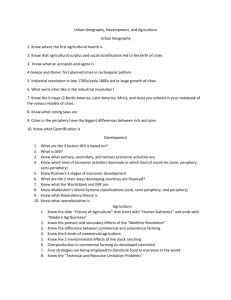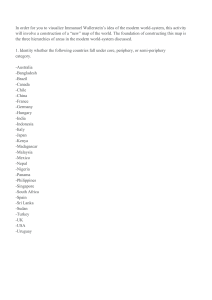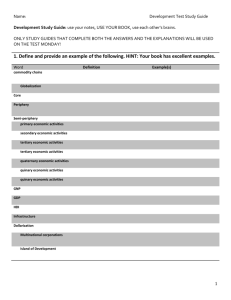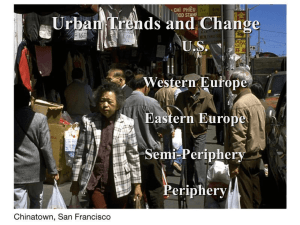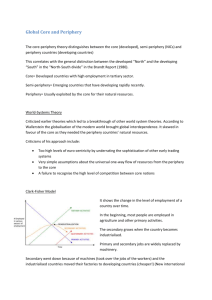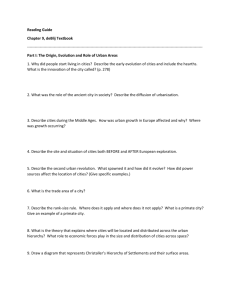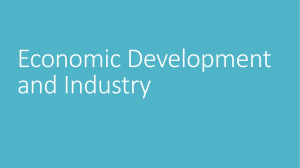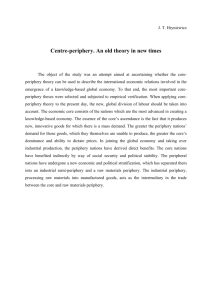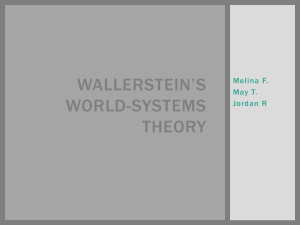Models of Development
advertisement
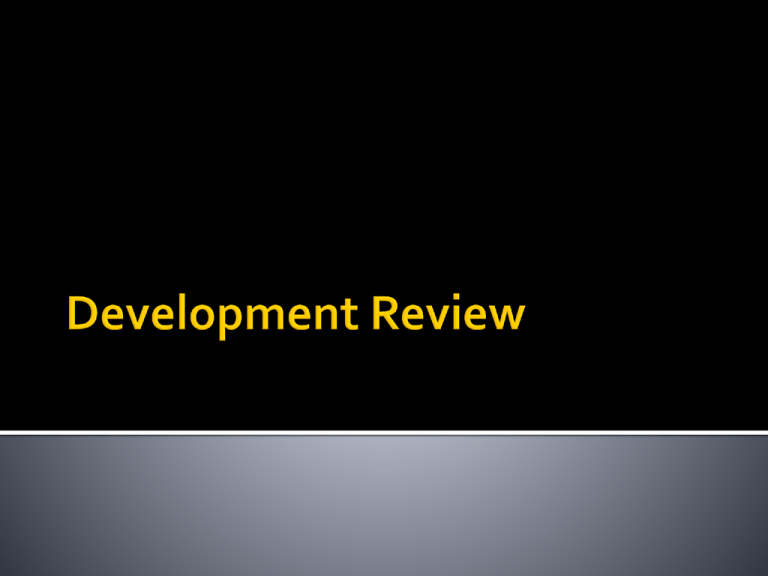
Review 1. What sectors of the economy do you see? 2. What are the social characteristics of LDCs? 3. Where do we find MDCs and LDCs on the globe? Review 4. What regions of the world are the most and least developed? 5. What are the 4 factors used to figure the Human Development Index? 6. Which regions of the world have the highest and lowest Gender Empowerment Measures? Rostow’s Stages of Development and Wallerstein’s World-Systems Theory 5-stage model Traditional society Preconditions for take-off Take-off Drive to maturity High Mass Consumption Each stage has reasons the country moves from one stage to another Little technology No social changes Moves to next stage when other countries invest in resources or new markets appear. Ex: OIL! GOLD! Minerals! Commercial companies invest Plantation agriculture Garment industry Mining Moves to next stage when roads/railroads (infrastructure improves) and social and political leaders emerge. Development of manufacturing (a country’s own companies for export) Moves to next stage with even more investment in this sector and the creation of modern social, economic, and political institutions Drive to Maturity Development of economy beyond manufacturing (widening base of industry and business) Moves to last stage when it can take advantage of its abilities to produce. High Mass Consumption People buy a lot of stuff. Two major problems Core, Semi-Periphery, Periphery The world is ONE economic market with a global division on labor (what each place does) Three levels: Core Semi-Periphery Periphery Notice the low levels of trade from Eastern Europe (including Russia) In Wallerstein’s theory, countries can move from one level to another. The world’s richer countries Wide range of products and services High wages Import raw materials and export manufactured goods/services Have favorable trade balances with poor countries Build up capital which is invested largely at home Invest in other core country economies Valuable trade with other core countries Poorer countries Limited products Limited technology Lower wages Dependent on core countries to purchase goods, provide capital, etc. This dependency is the root of many global problems/conflicts Supply raw materials Generally exploited by core Transition between core and periphery Still have dependent relationships with cores Have peripheral countries dependent on them South Korea, Mexico, Argentina, Thailand, Malaysia are examples of Semi-Periphery countries moving up Russia and neighbors moving down the scale
